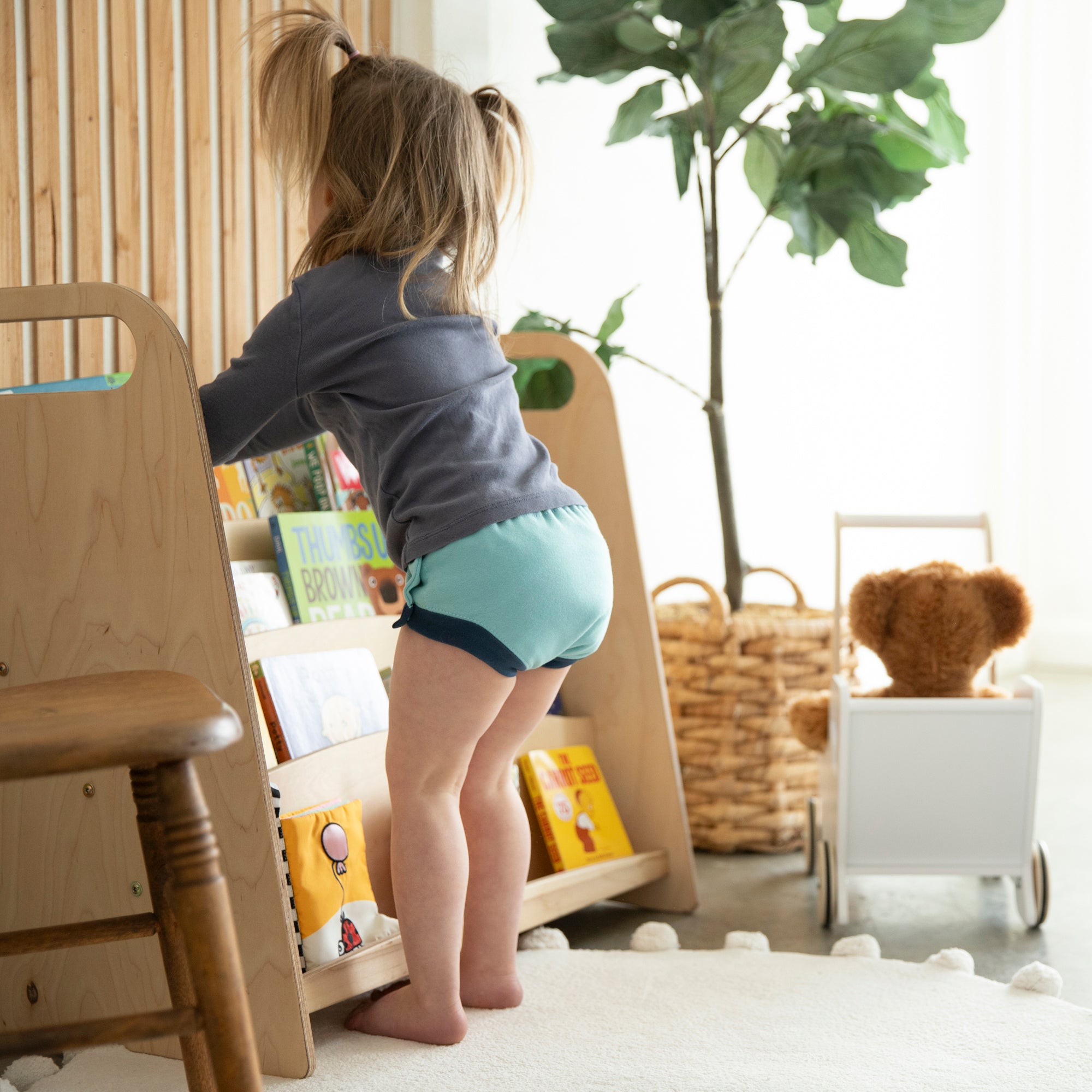I’m far from a sleep expert. Heck, I’m one of those people who gives you a blank stare if you tell me to “sleep when the baby sleeps.” I still try to find 5-10 presleep minutes to read or mindlessly check social media on a work night as the kids (and, sometimes, husband) slumber away. But, I’m concerned about the kids’ sleep schedules. With daylight saving time fast approaching, I get a little frantic about how it’ll affect everyone in the house. So, I did a bit of research and found a couple of great resources that I thought I’d share with you. And if you don’t have the time to peruse each one, I’ve given a quick review/summary of them to make it even easier on you. For the record, we have a five-year-old boy, a 2-year-old girl, and a 4-month-old girl. My husband and I both work full-time. Let’s be honest - I’m as concerned about we grown-ups handling the transition as I am the littles.
 Today’s Parent: Apparently some people prefer spring daylight savings. Who knew? I personally hate losing an hour - and my son slept until 8:30 or later all weekend (he’s been sick so I allowed it) so I know there will be some dazed faces around here. Anyhoo, Today’s Parent suggests getting kiddos up at their usual time of and continue with their usual naps and bedtimes, and they’ll be acclimated within a few days to a week. But for sensitive sleepers, start adjusting those times by a half hour several days in advance. My favorite tips are the tools to help things go smoothly. From blackout curtains to a toddler alarm clock to sound machines (a must to keep our light-sleeping 2-year-old asleep when her little sister wakes up fussing at 3am), they’re all great ideas to make things easier on everyone. Working Mother - A sleep expert at this “wow, they get it” website seconds the last advice as far as how to acclimate your child to the workday schedule, but adds a great extra tip for a general bedtime routine: “Also, develop some quiet activities and a solid nighttime routine that can give you both some downtime and prevent baby from going to bed before she's tired, resulting in tears and frustration for both of you. Puzzles or books are good options, and consider having your child flip through her own book while you catch up on your favorite magazine.” Sleep Baby Love - This sleep consultant offers a list of five tips for helping your child cope with the change, but two are particularly great. First, know your child. Some children won’t bat an eye at the changes, but others will be miserable and hyper sensitive to them. (For the record, I fall in the “doesn’t cope well” group, myself. I tend to get sick when the time change happens, too. My body just hates it.) Secondly, use the light to your advantage. Nothing helps your body awaken like a shot of sunshine - but the same can apply when you’re trying to get your child down. Using the aforementioned room darkening blinds or curtains can help contain the brightness and opening the shades can help your child’s body clock adjust and get ready for the day. She also suggests an adjustment to your child’s routine AFTER the time change, which is interesting. Move naptime in 15 minute increments towards the new naptime (and do it slowly - every three days move another 15 minutes) until they’ve reached the new norm.
Today’s Parent: Apparently some people prefer spring daylight savings. Who knew? I personally hate losing an hour - and my son slept until 8:30 or later all weekend (he’s been sick so I allowed it) so I know there will be some dazed faces around here. Anyhoo, Today’s Parent suggests getting kiddos up at their usual time of and continue with their usual naps and bedtimes, and they’ll be acclimated within a few days to a week. But for sensitive sleepers, start adjusting those times by a half hour several days in advance. My favorite tips are the tools to help things go smoothly. From blackout curtains to a toddler alarm clock to sound machines (a must to keep our light-sleeping 2-year-old asleep when her little sister wakes up fussing at 3am), they’re all great ideas to make things easier on everyone. Working Mother - A sleep expert at this “wow, they get it” website seconds the last advice as far as how to acclimate your child to the workday schedule, but adds a great extra tip for a general bedtime routine: “Also, develop some quiet activities and a solid nighttime routine that can give you both some downtime and prevent baby from going to bed before she's tired, resulting in tears and frustration for both of you. Puzzles or books are good options, and consider having your child flip through her own book while you catch up on your favorite magazine.” Sleep Baby Love - This sleep consultant offers a list of five tips for helping your child cope with the change, but two are particularly great. First, know your child. Some children won’t bat an eye at the changes, but others will be miserable and hyper sensitive to them. (For the record, I fall in the “doesn’t cope well” group, myself. I tend to get sick when the time change happens, too. My body just hates it.) Secondly, use the light to your advantage. Nothing helps your body awaken like a shot of sunshine - but the same can apply when you’re trying to get your child down. Using the aforementioned room darkening blinds or curtains can help contain the brightness and opening the shades can help your child’s body clock adjust and get ready for the day. She also suggests an adjustment to your child’s routine AFTER the time change, which is interesting. Move naptime in 15 minute increments towards the new naptime (and do it slowly - every three days move another 15 minutes) until they’ve reached the new norm.
 I’d love to hear how you all handle the change. Do you do anything or not? Do you make adjustments? Do you try to trick everyone’s system with special curtains? And how do you feel about the whole daylight saving, overall?
I’d love to hear how you all handle the change. Do you do anything or not? Do you make adjustments? Do you try to trick everyone’s system with special curtains? And how do you feel about the whole daylight saving, overall?





